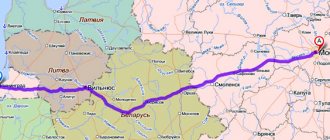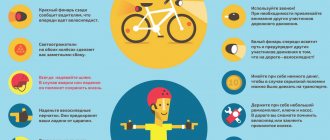| Authors of the article: |
| AMB MOTORS team |
| www.ambmotors.ru |
| +7(495) 724-10-44 |
This article is an addition to the material on the removal of a car purchased in Russia. Here we would like to dwell in more detail on the procedure for importing a car into Kazakhstan.
The process of searching, purchasing and registering a car in the Russian Federation for a citizen of Kazakhstan is no different from similar actions, say, for a citizen of Belarus. The only difference: the car registration certificate indicates different countries of export. The main differences begin when crossing the Russian-Kazakh border.
Tip two
Having registered your car with the Russian traffic police (MREO), be sure to obtain transit insurance for driving through the territory of the Russian Federation . As we have already written, it is better to purchase such insurance from an insurance company whose office is located as far as possible from the traffic police building. Otherwise, you will have to seriously overpay for it.
To obtain insurance at reasonable prices, we recommend that you contact the offices: https://www.ingos.ru/ru/company/office/. Find out their opening hours in advance, especially on Saturday and Sunday.
By the way, keep in mind: due to the peculiarities of the policy of the Russian Union of Auto Insurers (RUA), insurance companies officially have nothing to do with issuing transit insurance. That is, in this case, employees actually work for free. This is why insurers are very reluctant to issue transit insurance. And those who are ready to do this “quickly and without unnecessary questions” can charge up to 4 thousand rubles (about 12 thousand tenge) for their services.
To make the girls who make policies treat you more kindly, buy them something tasty “for tea” - for example, a box of good chocolates or a fresh cake. And it’s even better if your gift has a national flavor - that is, it was brought from Kazakhstan. The price of these sweets is almost symbolic, but you will be greeted differently.
Register a car from the EAEU: who to pay and how much
Over the past month, the topic of registering cars from the EAEU countries has become perhaps the most discussed in Kazakhstan. For convenience, we have collected current data for 2021 in one place.
How to calculate the cost of customs clearance?
An approximate calculation of customs duties and taxes on passenger vehicles can be found at THIS LINK on the website of the State Revenue Committee.
How much does initial car registration cost?
Passenger car (category “M-1”, up to 8 seats):
- up to 2 years - 0.25 MCI - 663 tenge
– from 2-3 years – 50 MCI – 132,550 tenge
– from 3 years – 500 MCI – 1,325,500 tenge
Minibuses (category “M-2”, more than 8 seats, in addition to the driver, up to 5 tons):
– up to 2 years – 0.25 MCI – 663 tenge
– from 2 to 3 years – 240 MCI – 636,240
— from 3 to 5 years — 350 MCI — 927,850
— over 5 years — 500 MCI — 6,627,500
How to calculate recycling fee?
The base rate (50 MCI) must be multiplied by a coefficient that depends on the type of car and is given below. In 2021, 1 MCI is equal to 2,651 tenge, which means the base rate in 2021 is 132,550 tenge. The amount is calculated based on engine size.
For passenger cars:
- up to 1,000 cubic meters cm – coefficient 3 – 397,650 tenge;
- from 1,001 to 2,000 cubic meters. cm – coefficient 7 – 927,850 tenge;
- from 2,001 cubic meters cm up to 3,000 cc. cm – coefficient 10 – 1,325,500 tenge;
- over 3,001 cubic meters cm – coefficient 23 – 3,048,650 tenge.
- up to 2,500 cubic meters cm - coefficient 8 - 1,060,400 tenge
— from 2,500 to 5,000 cubic meters. cm – coefficient 16 – 2,120,800 tenge
- from 5,000 to 10,000 cubic meters. cm – coefficient 21 – 2,783,550 tenge
- over 10,001 cubic meters cm – coefficient 27 – 3,578,850 tenge
State fees for registration
— for a license plate – 2.8 MCI (7,423 tenge);
— for the registration itself – 0.25 MCI (663 tenge);
— for issuing a technical passport – 1.25 MCI (3,314 tenge);
— for transit numbers (if required) – 0.35 MCI (928 tenge)
What do you need to take with you to register at the special service center?
— state registration license plates of the car;
— technical passport (vehicle registration certificate);
— a certificate of technical inspection (for cars under 7 years old a certificate is not required);
— a document confirming ownership of the vehicle (a written form of the transaction or, if you are an heir, then documents on entry into inheritance);
- a certificate of payment of vehicle tax (can be obtained at a special PSC or any other PSC. The tax amount can be calculated on the Internet using this THIS LINK. The tax can also be calculated on the website of the State Revenue Committee, but at the time of publication their calculator gave a “0” value) ;
For converted cars or vehicles with special equipment, you will additionally need:
— certificate of the manufacturer or organization that installed the equipment, or relevant customs documents for imported equipment, certificate of conformity;
— certificate of compliance of this vehicle with safety requirements.
Your car will not be registered if:
— it does not comply with the Euro-4 standard (cars older than 2009);
— no daytime running lights;
— no ISOFIX child seat mount;
— no driver airbag;
— the exhaust neutralization system does not work;
Source
Tip three
Having registered your car with the MREO and purchased Russian transit insurance, you can safely go home. But pay attention to a few nuances. ➢ Don’t forget to attach the transit signs to the regular places for the license plates - for this you will need four standard plastic zip ties. If you do not do this in advance, you may be fined 5 thousand rubles (about 15 thousand tenge). ➢ On the territory of the Russian Federation and Kazakhstan at any time of the day you must drive with your low beams on ! ➢ When buying a car in Russia, we recommend that you also update your fire extinguisher, first aid kit and warning triangle . If the car does not have this kit or one of its components is expired, then traffic cops (both Russian and Kazakh) can find fault with this, which will result in a substantial fine.
➢ If you drive a car in winter, then make sure that the car has winter tires . In Kazakhstan, there are sections of the road where there is bare ice on the road for several hundred kilometers in the steppe zone. There are also serious changes in the road (blizzard), during which visibility is reduced to 10 meters.
A new way to import used cars has appeared in the Customs Union
So, a new way of importing used cars has appeared in the countries of the Customs Union. Will it suit the Kazakh car market?
Where do the “firewood” come from?
Getting behind the wheel of your own car and driving it not from the territory of the car market, but from the gates of a prestigious car dealership - every driver dreams of this. But is the percentage of people who can afford an “oil car” really that high? The question is mostly rhetorical.
Politicians are shouting from high stands that we need to follow the example of Europe and get rid of old cars that stink of smoke, so to speak, rejuvenate the vehicle fleet. However, our realities are such that the cost of a new car is not comparable with the income of the so-called average Kazakh citizen. There are more than 3.8 million passenger cars registered in the country. Of these, 2.4 million are over 10 years old! That is, more than half - 63 percent! This probably says something...
Perhaps, when the situation on the foreign exchange market turns in the opposite direction and the incomes of Kazakhstanis equal to the level of wages in Europe, something will change. For now, we just have to be content with what we have.
And the first thing that the market in developing countries offers is a secondary car fleet, that is, used and downright old cars. However, it can also be different.
The distant 90s, when car haulers “dragged” cars from Germany and the Baltic countries, have already been practically forgotten. In those years, the currency was worth ridiculous, by today’s standards, domestic money, and in Europe there was a lot of affordable transport over ten years old, which, for example, the Bavarians were happy to get rid of.
Then the customs, as they say, “gave the go-ahead” and no difficulties arose with the registration of imported cars. In this situation, everything seemed to suit everyone: the Germans got rid of old, by Western standards, cars, for which they had to pay hefty taxes in their homeland, our unpretentious brother had the opportunity for 700-1000 euros to buy an excellent, only by Kazakh standards, car .
However, later the “shop” was closed, and as Euro-2, 3... and so on standards were introduced, which banned the import of old cars, the European corridor was closed.
Car enthusiasts will, of course, remember the 2000s for the famous Japanese cars - right-hand drive cars imported from the Land of the Rising Sun. These cars were significantly superior to their European counterparts both in technical equipment and in condition, which was often equal to the level of a new car.
Their only drawback was the location of the steering wheel, which became the reason, or rather the reason for the ban on their import, which came into force on January 1, 2007.
Fortunately, the imported cars were allowed to be used until they were completely worn out. Today, “Japanese women” are already a small caste of cars that are gradually dying out, like those mammoths from the Ice Age. Some go to landfill for technical reasons, others after serious accidents.
Don't cut rashly
And if the European market has managed to completely renew itself over a long period of mutual cooperation, the eastern market has not completely renovated. The Japanese are still happy to get rid of 5-, 10-year-old cars, since in their country the transport tax increases in proportion to the aging of the car.
But in their entirety, they are no longer in demand. As imports of full-fledged cars faded, the turnover of auto parts jumped sharply. As a matter of fact, this thread was already breathing deeply, because an experienced motorist is well aware that in most cases the quality of used spare parts from Japan and Europe is much higher than new Chinese ones. Of course, you can buy spare parts at official auto centers, but the price tags there are so high that even official representatives do not import some spare parts, but sell the goods only on order.
And most of all, the customs services of Vladivostok felt the influx of auto parts. There are entire syndicates working in the automobile business there that are more serious than those that operate in Siberia in the gold mines. However, this side of the issue is outside the scope of this material. We will focus on the clever intricacies that have allowed us to continue to saturate the CIS markets with used cars.
So, it is impossible to drive a right-hand drive car neither in Kazakhstan, nor in Russia, nor in Belarus - this is a fact. However, no one forbade the import of spare parts from the same right-hand drive cars. And this aspect has become a loophole for enterprising businessmen. The fact is that if the body of a car is cut in half, then in the customs declaration it will pass not as a full-fledged car made of two parts, but as two spare parts.
That is, on the Japanese side they carefully saw it and dismantle some of the car’s components. In the Land of the Rising Sun there are a number of companies that process cars into contract spare parts. Upon arrival at the port, this iron undergoes customs clearance, and then in some garage cooperative, a master with a practiced hand carefully welds the two cut parts into a single whole.
All that remains is to disguise the seams and install all those components that were removed in Japan, and voila - a brand new car can drive on the roads of the Russian Federation. True, there is one “but” - it will not be possible to register such a car, and here again various and, of course, illegal schemes are involved, from changing license plates to registration for duplicate cars.
These cars, as a rule, are much cheaper than their solid counterparts, which is captivating. But you shouldn’t give in to temptation here. After all, the “cut” will sooner or later backfire on its owner. The most harmless thing is that the car will be seized by traffic inspectors as part of a criminal case. At worst - a traffic accident.
In the event of an accident, such “cuts” lead to irreversible consequences: the body, instead of taking the blow and deforming, breaks along the seam, and the two halves of the car fly apart in different directions. It is clear that the passengers and driver of such a car have much less chance of life than if they were driving in a normal car.
Prefabricated iron hodgepodge
Now there is another way to import second-class cars. This time in Belarus. The Customs Union has abolished the protective duty on the import of bodies. Previously, it was 15 percent of the customs value, but not less than 2,907 euros; now the note about the euro has been removed - only 15 percent remains. In other words, it has become significantly cheaper to import used car bodies. And what does it mean?
For Russians, essentially, nothing has changed, since registration of body replacements in their traffic police was prohibited. However, in Belarus, as in Kazakhstan, it is possible to completely legally register a body replacement. In particular, in the Republic of Kazakhstan this procedure is regulated in accordance with paragraph 53 of the “Rules for state registration and accounting of certain types of vehicles by vehicle identification number,” approved by order of the Minister of Internal Affairs on December 2, 2014. And in the case of replacing the body of a passenger car, the previous year of manufacture, make, model of the vehicle is entered in the SRTS (registration certificate), and a note is also made about replacing the body.
What is it for? In theory, if the car was involved in a serious accident and the body began to spin, then more than one service station will not be able to completely straighten the metal. However, if all the spare parts are moved to another, flat body, the car will still serve. This operation is not cheap, but the cost is several times lower than buying another car. But until recently there simply weren’t any good bodies (not “cuts”).
But there is another application for the innovation - you can disassemble a car that does not meet the Euro standard abroad, import it in parts and reassemble it. Such cars are popularly called “constructors”; the scheme for fitting them is similar to the scheme for cutting: the units are imported separately from the body. Or they simply import the body, and install the units from another car at the destination.
It will not be possible to register it as an imported car, but if you re-issue the documents for replacing the body, say, by finding the same car, but it has been trashed, this is possible. Replacement of the engine and suspension can be done without any re-registration.
Moreover, the body does not only mean bare metal. The commodity nomenclature of foreign economic activity of the Customs Union (TN VED CU) states that “the body can be fully equipped (that is, with all its structural elements and accessories, such as instrument panels, luggage racks, seats and cushions, mats, luggage racks and electrical equipment) "
Previously, it was unprofitable to bring “constructors” even for criminal manipulations with the VIN number, since there was a protective duty: first of at least 5,000 euros, and then of at least 3,000 euros. Therefore, in the same Vladivostok there was a scheme with so-called “cuts”. But now there is no protective duty, customs clearance of the body has dropped significantly.
Moreover, the requirements are more than adequate. The car must be the same model year, the same body type, and the color does not have to match. When registering, two cars must be presented for reconciliation: the donor body and the car registered in a specific country.
The VIN in the new registration certificate will be from the new body, but there will be a note about replacement.
And if for Belarusians this option looks tempting, since the country borders several EU countries, then for Kazakh entrepreneurs the scheme is no longer so attractive.
Firstly, to get to countries where you can still buy old cars in good condition, you need to overcome Russia and Belarus, and therefore, transportation costs increase. Secondly, the days when a running car in Germany could be purchased for a symbolic 500 euros are already gone. Thirdly, the tenge exchange rate, which weakens almost daily against foreign currencies, turns this idea into absurdity.
In Belarus, bodies are offered for 3-4 thousand euros, this is without the engine and chassis. If we convert this amount into our money, we get 1.7 million tenge (at the exchange rate on the day the article was written - 440 tenge per euro).
We entered this financial threshold on the car sales website, and in Almaty alone the resource generated more than 10,000 offers. Even having filtered out all cars older than 2000, there were 1,800 cars left to choose from - cars that do not need to be disassembled and assembled, and transported far away. You can buy them here and now.
Is the game worth the candle? The question is rhetorical. Most likely, neither Brest nor Almaty will become the second Vladivostok. At least for the foreseeable future.
Border crossing
a radar detector with you (buy or borrow from friends) - this is a very useful thing that will help you save money on the road. ➢ If you travel to the Russian Federation using an internal document (identity card), then when leaving Kazakhstan you will have to fill out a migration card , on which the border guards must put their stamp. Be sure to save this card, because when you cross the Russian-Kazakh border again, you will be asked for it back.
How to clear a car through customs in Russia in 2021
With a number of changes that occurred in 2021 in the issue of importing imported cars, car enthusiasts have more and more new questions. Let's look at the intricacies: what costs fall on the payer and how to calculate customs clearance of a car in a new way?
Design features
Have you decided to become the owner of an imported car? Be prepared for the fact that first of all you will have to prove your solvency by depositing the guarantee amount. If you don’t know how to calculate the cost of customs clearance of a car, you can deposit an approximate amount into your account. In any case, unused funds will be returned by customs after complete border control.










